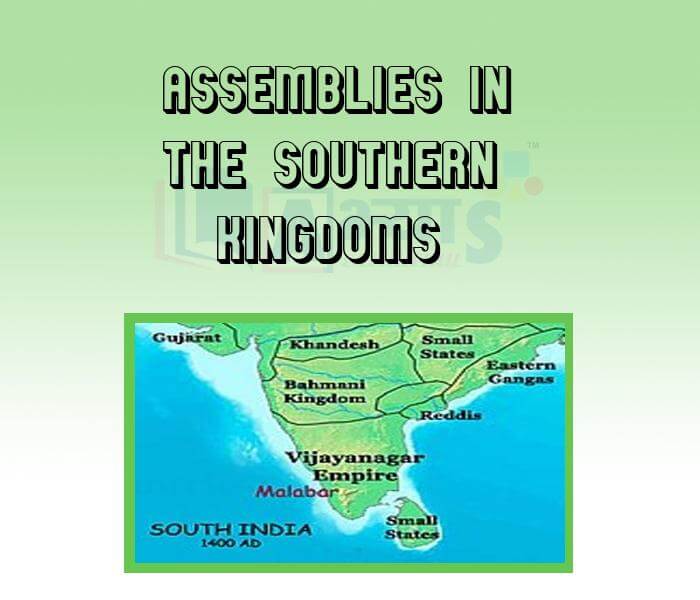Assemblies in the southern kingdoms












Assemblies in the southern kingdoms
Assemblies in the Southern Kingdoms: The assembly of non-brahmin landowners was called the ur. The organization of merchants was called the nagaram. Usually, these assemblies were controlled by rich merchants and landowners. Such local assemblies survived for centuries in south India.
The inscriptions of the Pallavas mention a number of local assemblies. These included the sabha, which was an assembly of Brahmin land Owners. This assembly functioned through sub-committees, which looked after irrigation, agricultural operations, making roads, local temples, etc.
The Ur was a village assembly found in areas where the land owners were not Brahmins. And the nagaram was an Organisation of merchants. It is likely that these assemblies were controlled by rich and powerful landowners and merchants.
Ordinary people in the kingdoms: Our knowledge about the life of the people of the time is drawn mainly from literary works such as Kalidas's plays , Banabhatta's Harshacharita and the accounts of foreign travellers like Fa Xian. Fa Xian mentions about the conditions of the untouchables who lived outside the city.
Kalidasa is known for his plays depicting life in the king’s court. An interesting feature about these plays is that the king and most Brahmins are shown as speaking Sanskrit, while women and men other than the king and Brahmins use prakrit. His most famous play, Abhijnana Shakuntalam, is the story of the love between a king named Dushyanta and a young woman named Shakuntala.
The assembly of Brahmin landowners was called the _______________ | |||
| Right Option : B | |||
| View Explanation | |||
Students / Parents Reviews [10]
My experience with Abhyas is very good. I have learnt many things here like vedic maths and reasoning also. Teachers here first take our doubts and then there are assignments to verify our weak points.

Shivam Rana
7thIt was a good experience with Abhyas Academy. I even faced problems in starting but slowly and steadily overcomed. Especially reasoning classes helped me a lot.

Cheshta
10thMy experience with Abhyas academy is very good. I did not think that my every subject coming here will be so strong. The main thing is that the online tests had made me learn here more things.

Hiya Gupta
8thIt has a great methodology. Students here can get analysis to their test quickly.We can learn easily through PPTs and the testing methods are good. We know that where we have to practice

Barkha Arora
10thA marvelous experience with Abhyas. I am glad to share that my ward has achieved more than enough at the Ambala ABHYAS centre. Years have passed on and more and more he has gained. May the centre flourish and develop day by day by the grace of God.

Archit Segal
7thAbhyas Methodology is very good. It is based on according to student and each child manages accordingly to its properly. Methodology has improved the abilities of students to shine them in future.

Manish Kumar
10thAbout Abhyas metholodology the teachers are very nice and hardworking toward students.The Centre Head Mrs Anu Sethi is also a brilliant teacher.Abhyas has taught me how to overcome problems and has always taken my doubts and suppoeted me.

Shreya Shrivastava
8thMy experience was very good with Abhyas academy. I am studying here from 6th class and I am satisfied by its results in my life. I improved a lot here ahead of school syllabus.

Ayan Ghosh
8thIt was good as the experience because as we had come here we had been improved in a such envirnment created here.Extra is taught which is beneficial for future.

Eshan Arora
8thI have spent a wonderful time in Abhyas academy. It has made my reasoning more apt, English more stronger and Maths an interesting subject for me. It has given me a habbit of self studying
